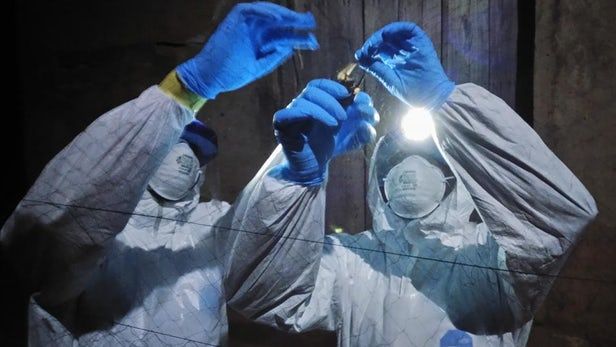Adding graphene to a gel makes a 3D-printable substance that dries to be strong and conductive and heals when wet.



The ranks of the ebolavirus genus have grown for the first time in a decade, with the identification of a new strain in free-tailed bats in Sierra Leone. It is not yet known if it is harmful to humans, but its discovery will assist scientists trying to better understand how the virus hides between outbreaks, and by extension help our efforts to better contain them.
Love is a burning thing and it makes a fiery ring. Black holes, however, do not.
New research disproves the so-called “firewall” theory, which suggests the ring of fire around a supernova would incinerate anything sucked into its gravitational pull.
A team from Ohio State University determined what would actually happen if an electron fell into a black hole with a mass as big as the Sun.

With more than 5.6 million articles, Wikipedia is an invaluable resource, whether you’re throwing a term paper together at the last minute, or doing legal research on whether it can really be considered assault if your victim habitually made the “cows outstanding in their field” joke. We explore some of Wikipedia’s oddities in our 5,690,195-week series, Wiki Wormhole.
This week’s entry: Vertical farming
What it’s about: Ah, the farmer’s life. The smell of the soil, the green of the leaves, the view from the 45th floor. Yes, like bathrooms before them, farms are moving into the future by moving indoors. Hydroponic farming has made vertical farms possible, in which floor after floor of a building is devoted to growing food. One such farm in Buffalo, New York contains 17 million plans, and a “windowless farm” in Kyoto produces 6 million heads of lettuce a year.

A new interview on LEAF with biogerontologist Dr. João Pedro de Magalhães.
Today, we have an interview with Dr. João Pedro de Magalhães, the biogerontologist who created and runs senescence.info. In the unlikely event that his name is new to you, we had another interview with him last year, which you can check out here.
How do you think we age; are we programmed to die, do we wear out, or is the truth a mixture of both?
I don’t think we wear out. Humans and complex animals are made of cells and molecules that, by and large, have some turnover; we can replace most of our components, so I don’t think it’s correct to see aging as wearing out, at least not in complex animals like humans. (Please see here.) That said, I do think that some forms of cumulative damage contribute to the aging process, such as DNA damage. I also think that there are programmatic aspects to aging. That is, I think that genetic programs coordinating some aspects of growth and development persist into adulthood and become detrimental as forms of antagonistic pleiotropy. It is probably a combination of molecular damage and the inadvertent actions of genetic programs that causes aging.

When it comes to new materials, thin is most definitely in. Brazilian researchers have created a new two-dimensional material called hematene, which is made up of sheets of iron ore just three atoms thick. And as is often the case with 2D materials, hematene seems to have different properties to its regular form.

“The eyes are the window of the soul.” Cicero said that. But it’s a bunch of baloney.
Unless you’re a state-of-the-art set of machine-learning algorithms with the ability to demonstrate links between eye movements and four of the big five personality traits.
If that’s the case, then Cicero was spot on.

Tesla is cutting back on plastic with its new car delivery system. On Monday, CEO Elon Musk shared the story of how he personally delivered a Tesla Model 3 to Devin Scott in Los Angeles, using a new method where instead of arriving in plastic wrap, the car is delivered with an enclosed trailer directly from factory to home.
The new method is a marked change from the previous process, where several cars would ship out on a truck to a delivery hub and move out later. It means less packaging, and potentially fewer steps in getting some of the approximately 7,000 cars produced per week into the hands of buyers. Tesla produces around seven times more cars per week than it did when the Model 3 first started production a year ago, and this rapid expansion has led to big changes in the company’s processes to fulfill the 400,000 or so $1,000 reservations for the Model 3. In a March 2017 earnings call, Musk said his goal was to make deliveries “more streamlined, less paperwork, less bureaucracy.”

